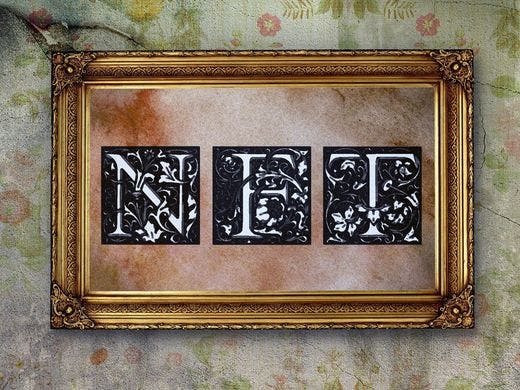The Environmental Impact of NFTs - How Big and How Bad?
NFTs (and applications utilising blockchain technology more broadly) are coming under increasing scrutiny for their impact on the planet, and for good reason. The blockchain technology which enables the creation and trade of digital assets is environmentally damaging due to the ‘mining’ processes required to certify transactions, which use a LOT of power. Having said this NFTs certainly don’t have to be entirely at odds with ESG considerations.
It is widely accepted that the energy consumption to create NFTs is big. The question is how big and how bad it is? And that is where experts don’t all agree.
One Cambridge study suggests that Bitcoin consumes more energy annually than the entire country of Argentina – clearly a vast, and additional, environmental expense.
On the other hand, it’s been estimated that 39% of ‘Proof of Work’ is powered by renewable energy sources.
Comparing Apples & Pears
Whether or not the above facts are close to the truth, what is a more useful thing to do is compare the energy usage of mining to existing infrastructures and systems. If NFTs and their creation are viewed as replacement technologies for existing infrastructures and systems, then the impact begins to appear more palatable. For instance, if cryptocurrency energy usage (50.16KWh/year) is compared in relative terms to the equivalent chunk of the global banking industry (263.72KWh/year) then the focus of scrutiny is shared more evenly, and this is of course true even more so if they are to replace these incumbent systems, at which point these absolute costs must instead be compared with the opportunity costs associated with them.
Importantly, there are much more environmentally friendly technologies which already exist and continue to emerge at astonishing rates, which can almost overcome the assumed energy consumption issue of previous systems. The most significant breakthrough here stems from the difference between blockchains like Bitcoin – which operate using a Proof of Work (PoW) authentication process – and most other blockchains like Solana which use Proof of Stake (PoS). These PoS systems generally incur a minute fraction of the energy consumed by PoW mechanisms, which incentivise massive computing power allocations as miners essentially ‘race’ to authorise a block of transactions. PoS blockchains essentially grant mining power in accordance with other variables such as the amount of the dedicated cryptocurrency the miner has ‘staked’ or simply the ‘authority’ bestowed upon registered miners. There are many variations of these validation mechanisms which vary blockchain to blockchain, but ultimately it is really only the PoW systems which cast such a heavy environmental shadow.
Ultimately it is possible to enter these new channels without causing a devastating environmental blow – but a conscious effort must be made to carefully select a suitable platform.
Social Responsibility
Responsible NFT projects require not only eco-friendly blockchains, but also operational best-practices to minimise social risks. Some brands and organisations have already come under fire for NFT campaigns – the WWF sold NFTs to heighten awareness around endangered animals, but the NFTs were quickly withdrawn after backlash around the potential environmental impact of the NFT creation.
What is true is that with any NFT campaign, it needs to complement and add value to the brand and current product offerings. It’s crucial that there is a fair and justifiable value exchange with the consumer i.e., in the form of promotions, exclusive access, voting rights, limited edition products, etc. and that its simply not a means to cash-in on the hype of an emerging trend, giving no real-world value to customers. Such strategies are myopic, often fail, and will likely be actively damaging to brand value in the long term.
It is also crucial that organisations ensure communication with consumers is entirely transparent and educational. Consumers are inherently going to have many questions about NFTs – it needs to be considered an internal responsibility to educate customers on the ‘what?’ and the ‘how?’. Not only to aid in success of NFT strategies but to also dispel any negative beliefs about NFTs, such as misconstrued understandings of the environmental impact. Failure to do so may result in consumer backlash.
Doubtless we won’t have seen the end of poorly constructed NFT launches both from individuals and established brands. But, whilst the public noise may be extreme, NFT strategies can be powerful, useful and adhere to environmental impact parameters.
If you’re interested in entering this space and want strategic guidance, technology partner recommendations and introductions, or are just keen to learn more, then don’t hesitate to get in touch with the team.


